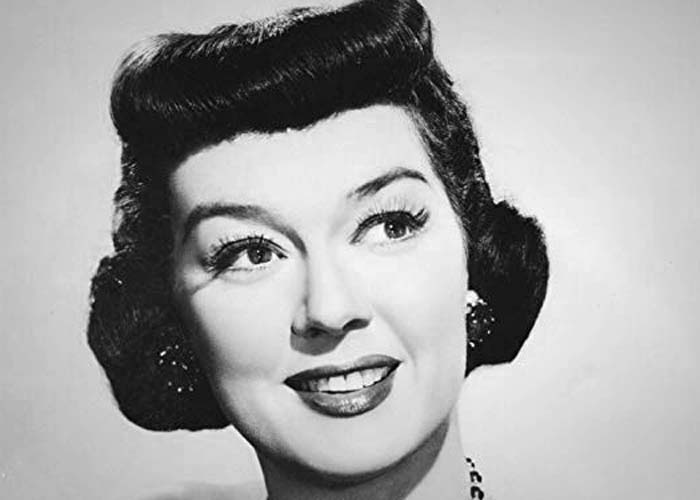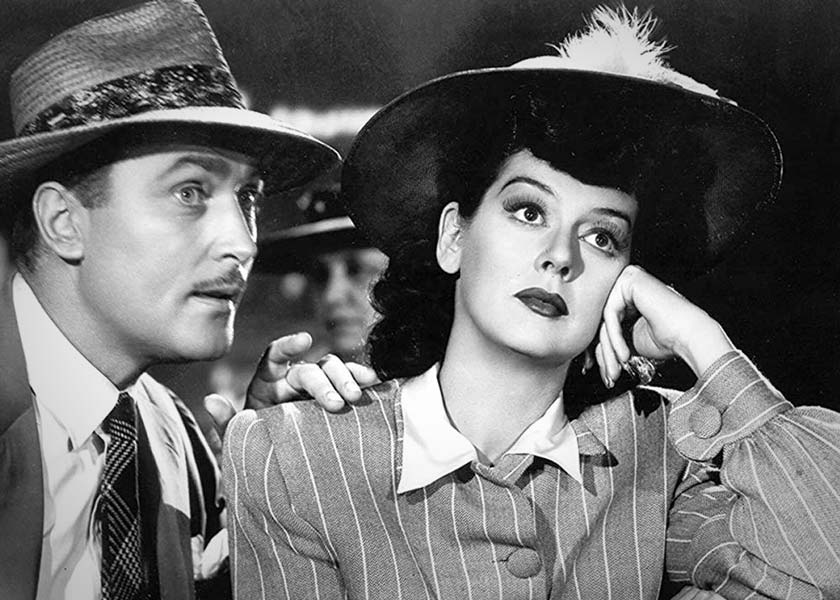Synopsis
The Sherwood sisters from Columbus, Ohio, erstwhile writer Ruth (Russell) and aspiring actress Eileen (Blair), rent a basement apartment in Greenwich Village. A subway tunnel is being blasted nearby. After they object to drunks ogling them through the window, a policeman warns them not to make a disturbance. 'The Wreck' Loomis (Gordon Jones), who lives upstairs, asks if he can sleep in their kitchen while his mother–in-law visits.
Ruth goes to Manhatter magazine with a manuscript. After getting into the
middle of an argument between the editor and the publisher, Ruth runs out,
accidentally leaving her manuscript with editor, Robert Baker (Aherne). Meanwhile,
Eileen has gone to a theatrical agency looking for a job. She meets reporter Chic
Clark (Joslyn) who immediately decides he wants to interview
the pretty
young woman. Clark follows Eileen home and sends Ruth away on a false story so he
can interview
Eileen alone. Baker, intrigued with Ruth's story, visits the
apartment and rescues Eileen from Clark.
Ruth’s supposed story was about the docking of Portuguese Merchant Marine fleet at the Brooklyn navy yard. The Portuguese marine cadets follow Ruth back to the apartment; in the resulting confusion Eileen is arrested and spends the night in jail. At dinner, Baker advises Ruth to write about something she knows, such as her sister's adventures in New York.
The sisters' father, Walter (Grant Mitchell) and Grandma Sherwood (Elizabeth Patterson) visit. Jones is revealed to be sleeping in the sister's apartment. Eileen comes home, and her father learns she spent the night in jail. He demands his daughters return to Ohio. Baker arrives with a check for Ruth’'s story about Eileen. The landlord declares that blasting has ended, and the sisters take a six-month lease. Everybody goes out to dinner. Three workmen (The Three Stooges) drill through the floor and pop out of the subway tunnel.
Discussion
Lightweight and wholesome, the comic effect of My Sister Eileen depends on the unusual setting, the eccentric characters, and the series of amusing events. The contrasting personalities of the sisters and their mutual affection anchor the plot.
The hit play My Sister Eileen opened on Broadway in late 1940, starring Shirley Booth as Ruth, and was still running in September 1942 when the film was released. The play closed in January 1943 after 864 performances. Gordon Jones, who had been a star football player at UCLA, also played 'The Wreck' Loomis in the original Broadway production.

Rosalind Russell, nominated for four Best Actress Oscars during her career (including for My Sister Eileen), nicely captures the personality of Ruth: her intelligence, acerbic qualities, dedication to her writing and affection for her sister. Russell's film career began in 1934; during the 1930s, she received conventional romantic roles; although she played them well, the softness of such parts did not quite suit her strong features, husky voice, and assured manner. Howard Hawks' His Girl Friday (1940) cast her in a suitable part as a tough newspaper reporter, equal to her male colleagues. In the 1940s she frequently played self-directed, assertive career women. Russell made three comedies with Brian Aherne, whose easygoing personality was a good match for her forceful one.
Janet Blair, playing the most significant role in her film career, perfectly fits the character of Eileen Sherwood: pretty and vivacious, but with a rather one-dimensional personality. A notable big-bang singer, Blair made her first film in 1941, at age twenty. Russell recommended the appealing and lively young actress for My Sister Eileen, her fifth film. Subsequently, Columbia cast Blair in B-level programmers, with the exceptions of Once Upon a Time (1944), costarring Cary Grant, and Gallant Journey (1946), costarring Glenn Ford and directed by William Wellman. Having made no particular impact as a film actor, Blair's contract was dropped by Columbia in 1948. She continued her career in television and theater. During the national tour of South Pacific in 1950, Blair played Nellie Forbush over 1200 times. Blair returned to films in the late-1950s and early-1960s. In England, she costarred with Peter Wyngarde in the atmospheric Night of the Eagle (also know as Burn, Witch, Burn) in 1962. She appeared in numerous TV shows, including as Henry Fonda’s wife in The Smith Family (1971-72) and continued to appear regularly until the early 1980s. Her last TV appearance was a role on Murder, She Wrote in 1991.
TCM Film Festival, 2014
My Sister Eileen was shown as part of the
Family in the Movies: The Ties That Bind
theme at the TCM Classic Film
Festival in 2014. The guest speaker was Lance Brisson, son of actress Rosalind
Russell, who talked about his parents. During the making of
His Girl Friday, Russell thought Cary Grant was asking her out and
was somewhat disappointed when he introduced her to another chap
who had
seen her on screen and wanted to meet her. Frederick Brisson,
the other chap,
knew Grant when he was still Archibald Leach; Grant acted
as his go-between. Russell soon got over her disappointment, as Brisson won her
affection. They married in 1941. Brisson was an important producer on Broadway
with several hit plays, and he produced nine films. He produced the stage and film
versions of hit musicals Pajama Game (1954) and
Damn Yankees (1955).
After Hollywood dried up a bit for her in the late 1940s, Russell took the risk of going back on stage. She was dedicated to her career, took all her roles seriously, and was determined to continue acting. Russell toured with Bell, Book and Candle (1952); on Broadway, she won a Tony for Wonderful Town (1953-54), the musical version of My Sister Eileen, then portrayed Auntie Mame (1956-58) the most acclaimed role of her career.
Further Reading

